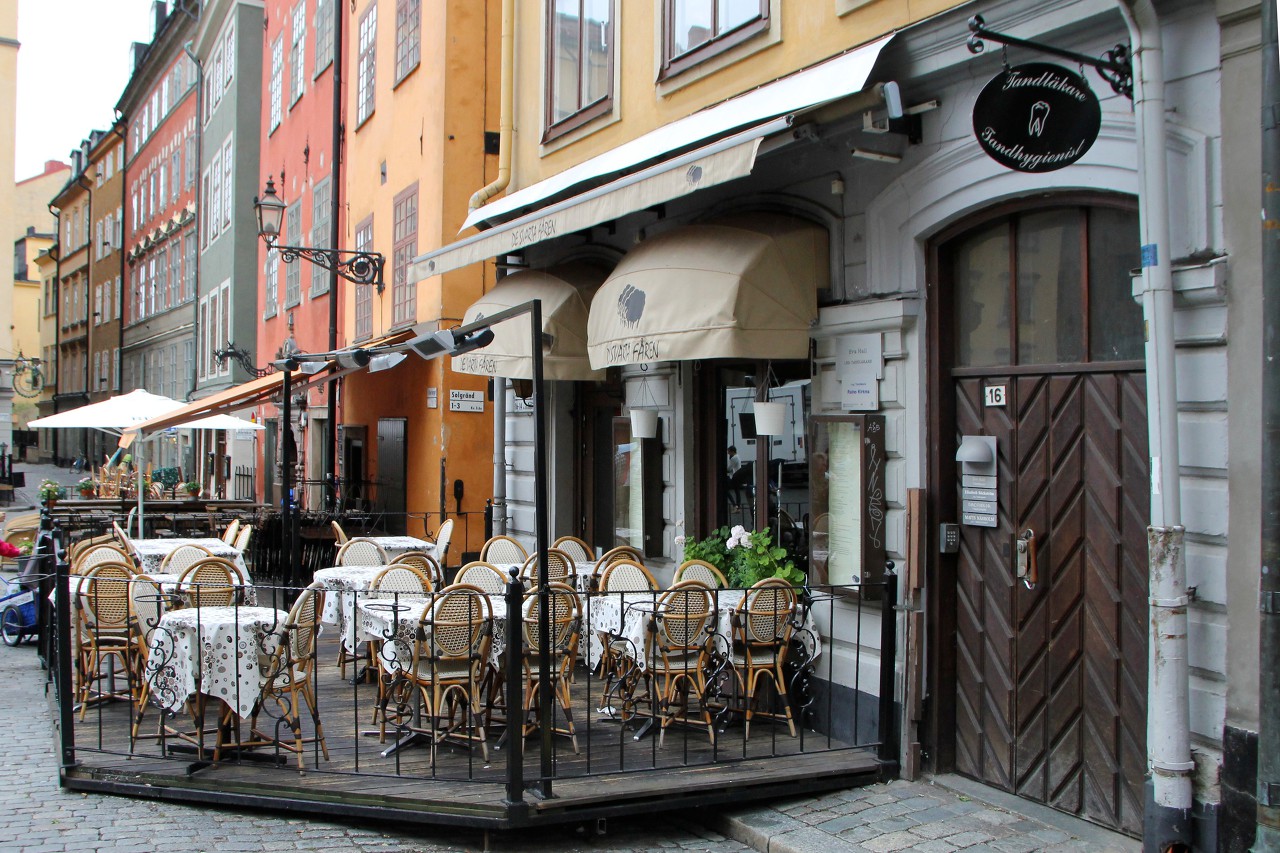Trångsund Street, Stockholm
From the outer courtyard of the Royal Palace, we went to Storkyrkobrinken Street. Here begins the oldest part of Stockholm, Gamla Stan (which translates as Old Town), whose development began in the 12th century. Since then, the layout has been preserved - narrow cobbled streets and many old buildings. Although we can now see buildings dating back to the 17th century, many buildings stand on medieval foundations with extensive vaulted basements.
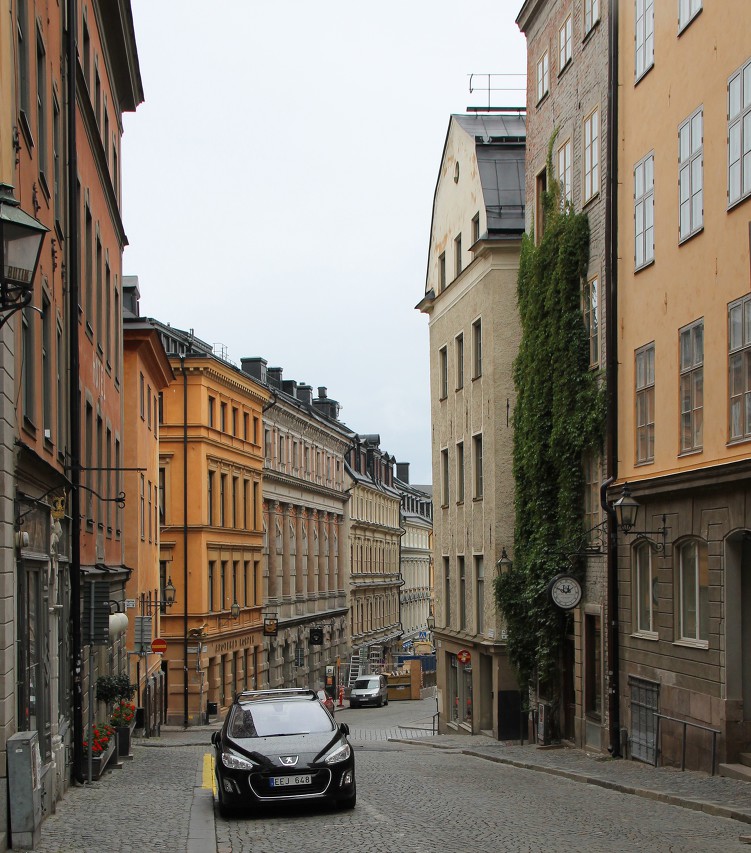
Gamla Stan will start from the short Trångsund Street, which starts at St. Nicholas Church. The name literally means narrow strait, in the 15th century it was really a narrow passage between the wall of the church and the fence of the cemetery. At the beginning of the 17th century, construction began on the site of the cemetery, the fence was demolished and the street became much wider. Building of number 1 is relatively new, but it is built on the foundation of a cemetery church and is appropriately named Storkyrkan (Big Church). The house is home to the famous antique shop Brinken Antik. The next house, Asplundska huset, was built in the fifties of the 17th century, here you can visit the gift shop.
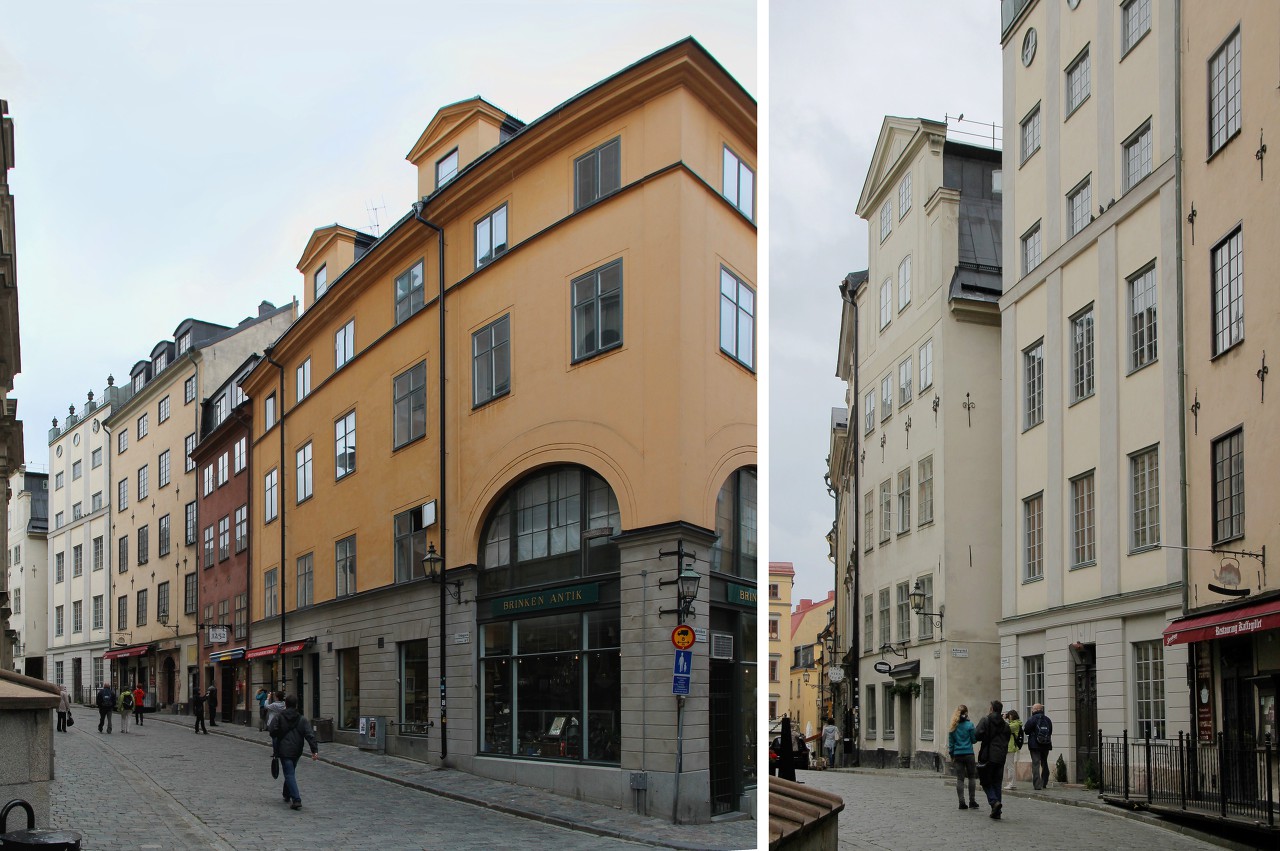
Building of number 4 (Robeckska huset) is also built in the 17th century, on a medieval foundation, in the vaulted basement of which is the Kaffegillet restaurant. On the other side of the street, at the right corner of St. Nicholas Cathedral, there is a wooden deck with a summer restaurant veranda. The tables and chairs here represent remarkable examples of Art Nouveau cast iron.
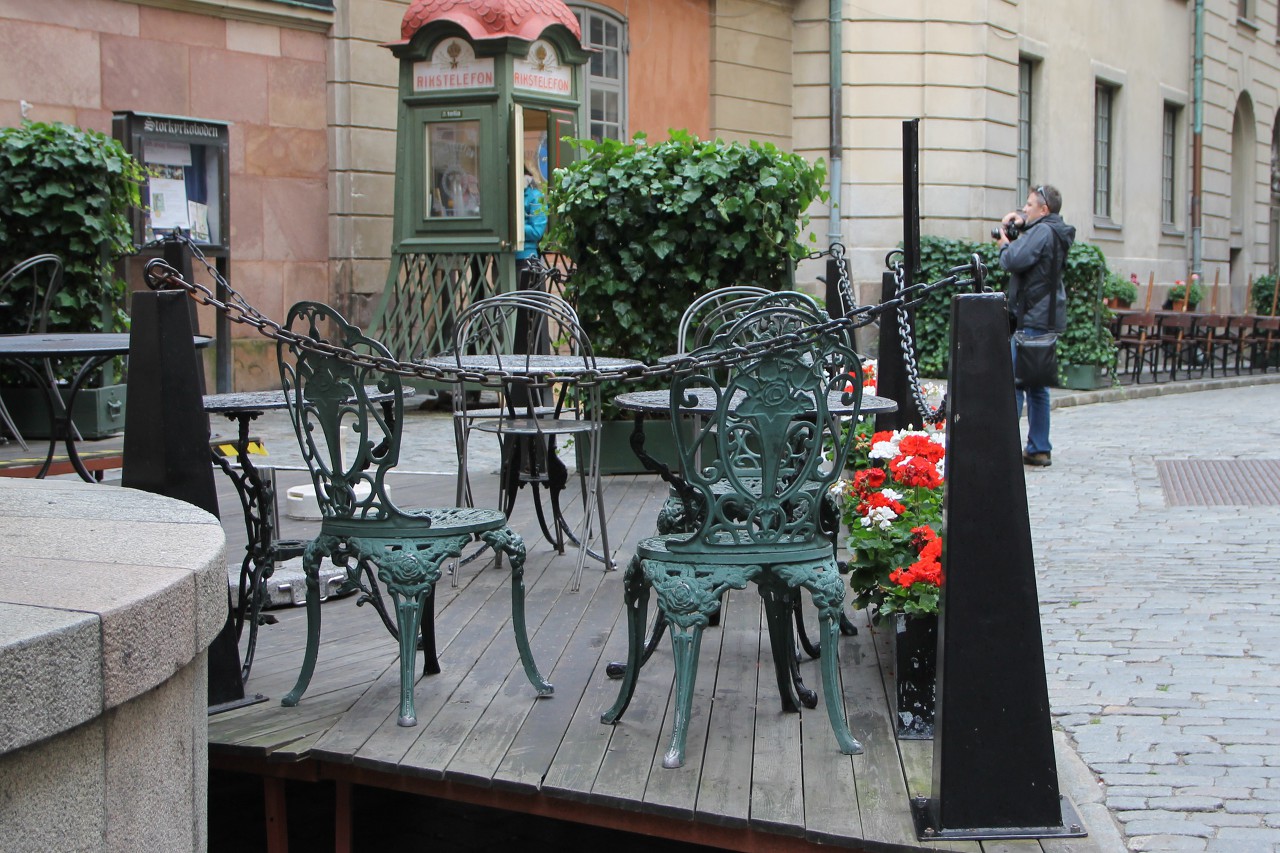
Behind the verandah are the gates of the old cemetery, decorated with two sculptures Förnuftet (Reason) and Den gudomliga kärleken (heavenly love) from the early 18th century. Unfortunately, I didn't see them in the photo, because my attention was drawn to a phone booth of a very original type, made of metal and wood in the Art Nouveau style.
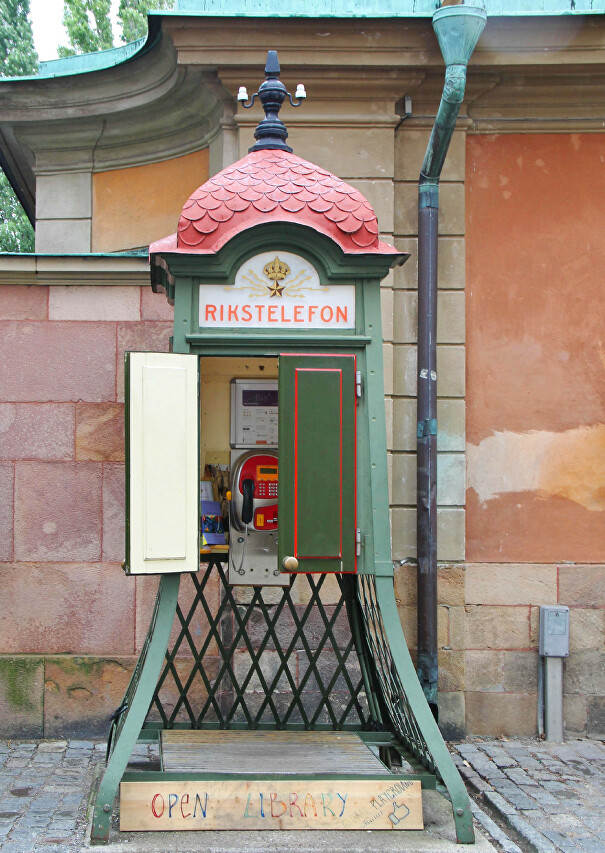
The following houses belong to the style of North German, or Brick Gothic. Stuténska Huset (No.6) was built in the middle of the 17th century. Sundmanska Huset (No.8) was built in 1638.
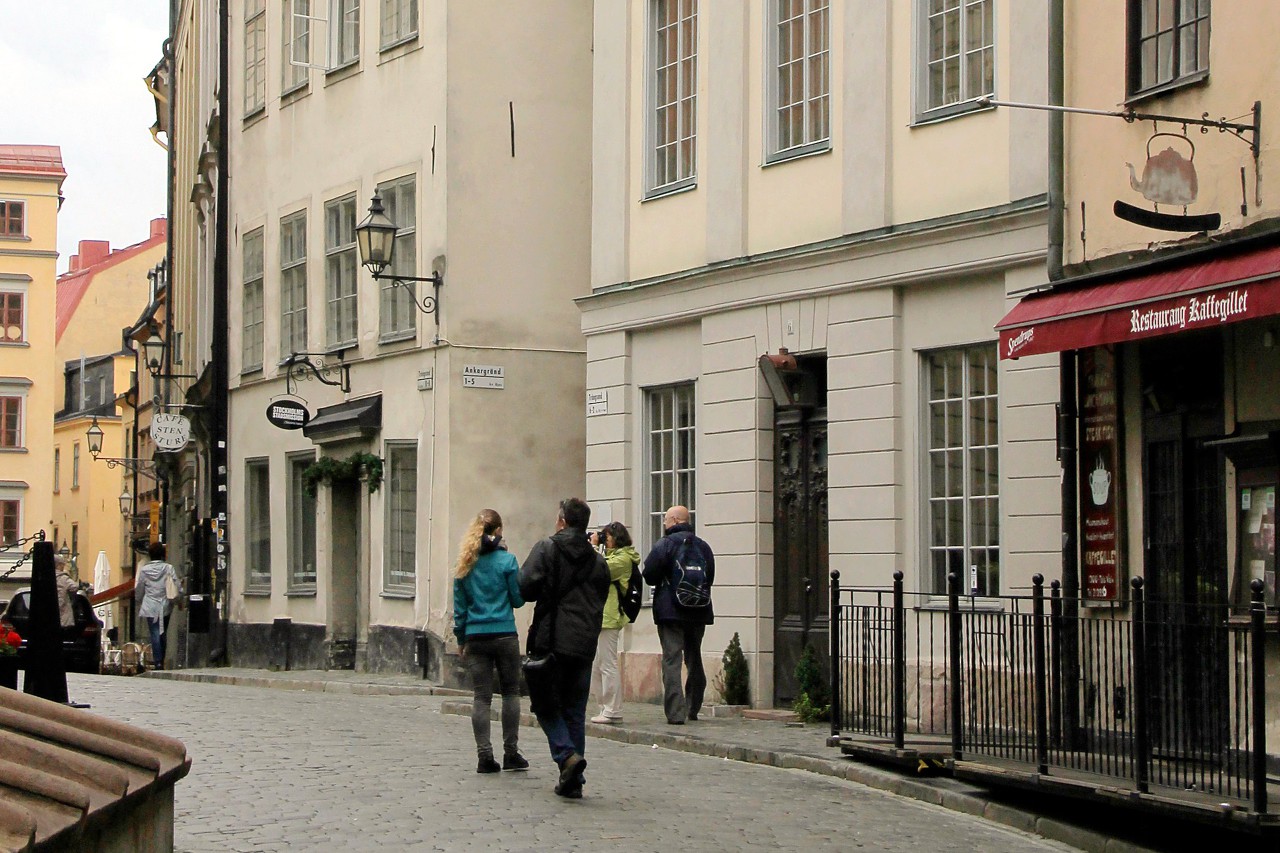
On the walls of these houses you can see forged metal parts with swirls, these are not decorations, but locks of beams that bind the walls. The wooden floors of old houses did not provide the rigidity of the building and the walls under the weight of these floors could disperse, so the builders used metal beams.
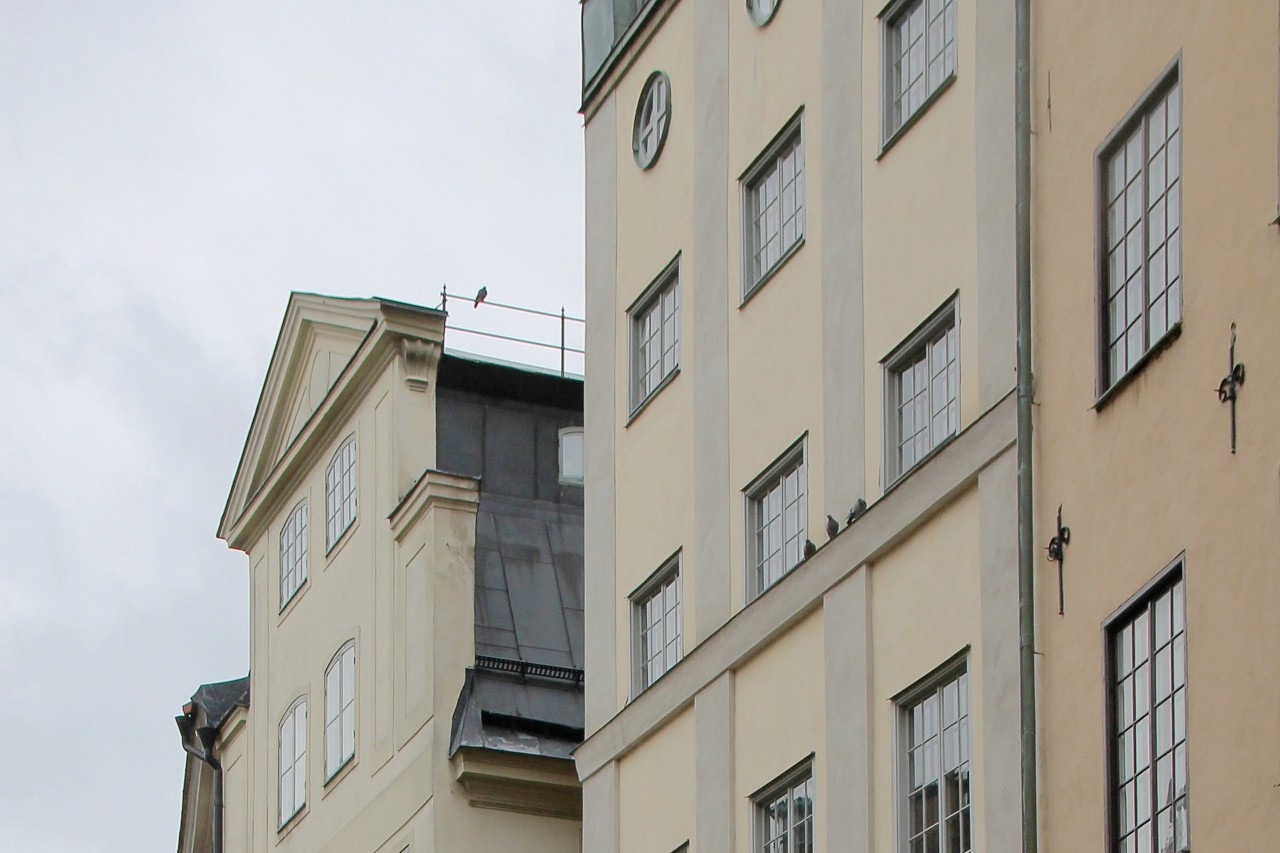
Peeking into the next alley with the intriguing name Spektens gränd( ghost Lane), I saw another piece of art casting. The tiny front courtyard is separated from the street by a cast-iron fence with Zionist ornaments and a gate with two lanterns on beautiful cast-iron pillars. Behind the gate was an unknown establishment with obscene inscriptions on the windows.
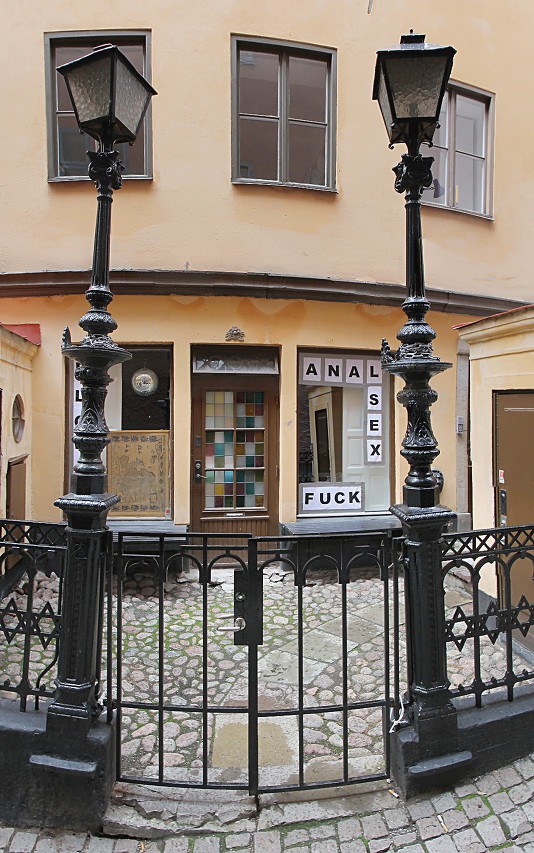
Here my attention was drawn to a round hole at the base of the wall of the house, framed by a bas-relief with an inscription telling about the 16.. year of construction. I can only guess at the purpose of this hole: this is most likely the ventilation of a medieval basement, closed with an iron bar on two locks from cats.
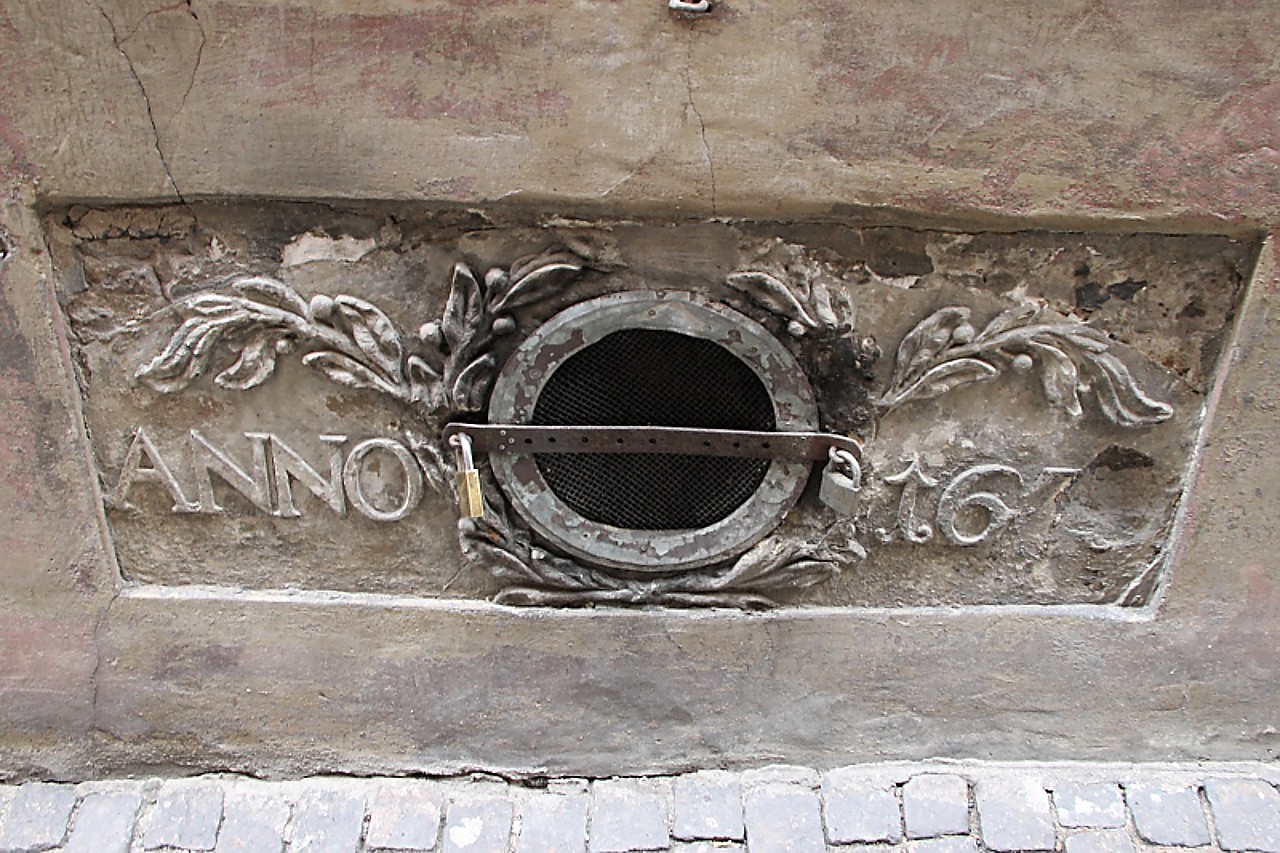
Let's go back to Trångsund Street. Hotel Gyllene Getten is located in house of number 12 (Knorringska huset), also built in the 17th century. At the next house, No. 14, you can visit the Wooden horse Museum and shop. The carved wooden and painted horse figurine is one of the symbols of Swedish folk art, a special attitude to this animal came from the Viking age, their successful expansion was based on good weapons, seaworthy ships and strong horses. Finally, the popular fish restaurant De Svarta Fåren is located in house 16. The street took us to the heart of Gamla Stan, Stortorget Square.
